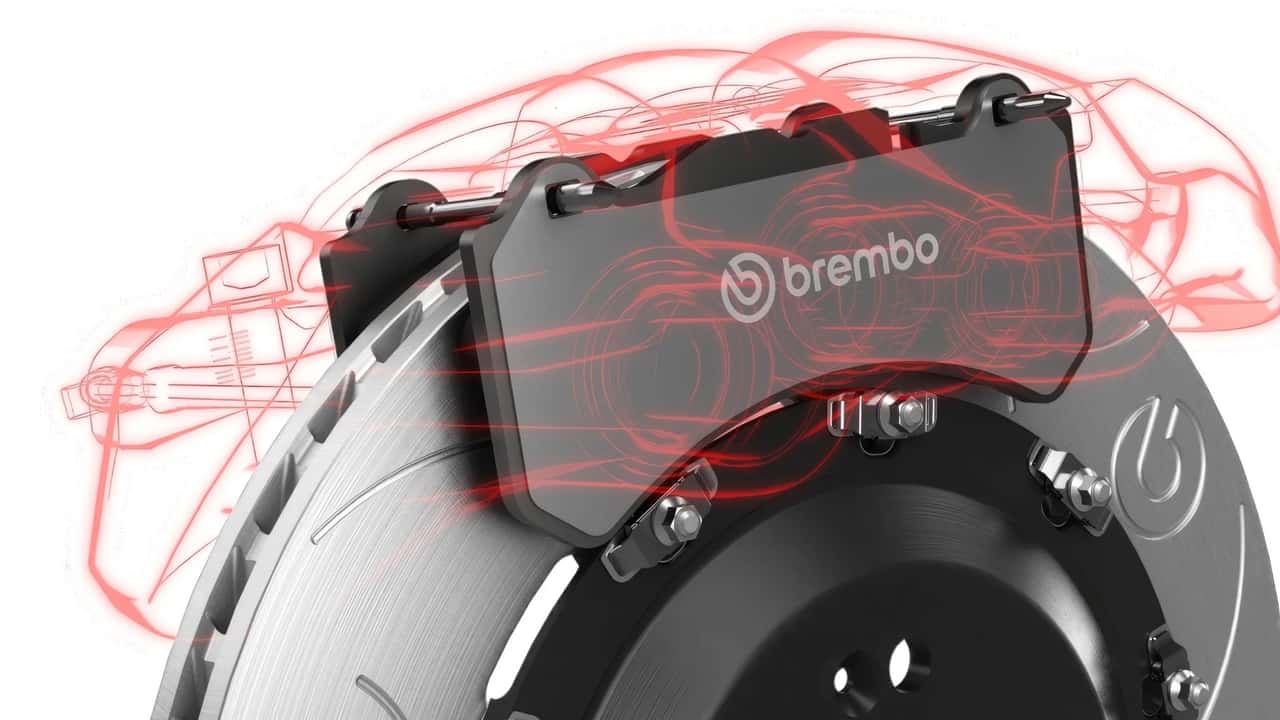Brembo and Michelin Are Changing How Cars Stop
Initial tests show significant reductions in stopping distance, but the greater implications are what's really fascinating.

Supergroups are always cause for excitement. When legends join forces, the possibilities seem endless. And so it is with Brembo and Michelin, leaders in their field, teaming up to make cars stop better, and possibly a bit more.
The collaboration revolves around Brembo’s new Sensify braking system, which in itself is particularly interesting. We’ve had brake-by-wire systems before, where the brake pedal essentially sends a signal to an electronic booster that distributes the hydraulic fluid to the calipers as in an otherwise-conventional (purely hydraulic) system, but Sensify is a bit different.
The system uses the brake pedal to send a signal to a control unit, but from there, the braking force at each corner of the car is fully variable. There are two methods of achieving this. First is with hydraulics, where each individual brake has its own master cylinder, actuated by an electric motor receiving signals from the brake control unit; second is with electric motors in the calipers, which actuate the pads without fluid whatsoever. In theory, you can combine both types, for instance, having hydraulic braking for the front wheels and "dry" braking for the rears.
Michelin is helping take it to the next level. Data from its software integrates with the information Sensify collects to create highly accurate real-time estimates of tire grip.

"What we do is in real time, we can identify based on data provided by Sensify… four critical parameters of the tires,” says Serge Lafon, head of Michelin’s OE tire business. "The tire load, wear level, pressure, and temperature. With those four parameters, we can identify and calculate the adherence coefficient of the tire, which is critical for any braking system."
In essence, Sensify can optimize the brake pressure at each corner of the car, getting much closer to the limit of grip just before lock-up.
'What’s essential to the system is how this precise knowledge of physics is provided to the Sensify brain almost instantaneously.'
"What’s essential to the system is how this precise knowledge of physics is provided to the Sensify brain almost instantaneously," says Ignacio Alvarez Troncoso, head of R&D at Brembo. "It makes a huge difference with how Sensify makes decisions."
The two companies started with simulation work. Real-world testing began at Michelin’s proving ground last fall. So far, the only figure the pair has provided is a reduction of ABS braking distances of up to 13 feet compared to a car with a "standard" ABS system. The tests were carried out in cars with both summer and winter tires, new and worn tires, correctly and underinflated tires, and in dry and wet conditions. The tests included full stops from speeds of 31 mph to 86 mph.

"At all times, you apply the maximum pressure without locking the tire," says Lafon. The system can compensate for any factor—environmental, wear, etc.—because it’s always calculating the exact grip coefficient for each tire.
Sensify distributes braking force by assessing everything that affects tire and braking performance, then makes adjustments on the fly. Troncoso didn’t get into specifics, but he did say the speed and accuracy of the data that it has, thanks to Michelin, has changed the way Brembo is developing the system.
What’s even more intriguing is what this sort of real-time tire data means for the rest of a car’s systems. The term “software-defined vehicle” is new and buzzy, and while arguably vehicles have been at least somewhat software-defined since the first computer-controlled engine management systems of the 1970s and 1980s, the term is useful to understand a more recent trend in cars.

So much of a car’s hardware is controlled by software, and increasingly, we see vehicle systems that talk to each other in a more sophisticated way. Not just multiple ECUs working away in parallel. Sensify fits in with this world.
"When we conceived Sensify, we were obviously thinking of the megatrend of the software-defined vehicle and making sure that our electronic architecture was compatible with the different evolutions we’re seeing," Troncoso says.
From a vehicle dynamics perspective, the goal is to maximize tire grip in all scenarios. Sensify, with the aid of Michelin, does so in braking events, but the data it generates on tire-grip levels has huge implications for other vehicle systems.
All these systems rely on virtual models, and tires are one of the hardest things to recreate in the digital world. Michelin, as you might expect, is one of the best at this, and adding real-time information from a clever braking system only enhances this.

Think about how that data will affect adaptive or active suspension, electronically controlled differentials, active aerodynamics, and powertrain systems. This collaboration between Brembo and Michelin will affect more than just how a car stops. It’ll also influence the direction of Michelin and Brembo’s (and likely everyone else’s) hardware, too.
But this partnership and the systems it has produced are still in their early days.
"We are at the beginning of this collaboration," Troncoso says. Sensify is set to hit the market in a production car in 2026, but neither Brembo nor Michelin is saying if the results of this collaboration will influence the earliest iterations of Sensify. However, both are clear that the aim is to put this on the road.
For a certain type of car nerd, the promise that this collaboration holds is huge. Let’s hope that, unlike so many other supergroups, the whole is greater than the sum of its parts.
